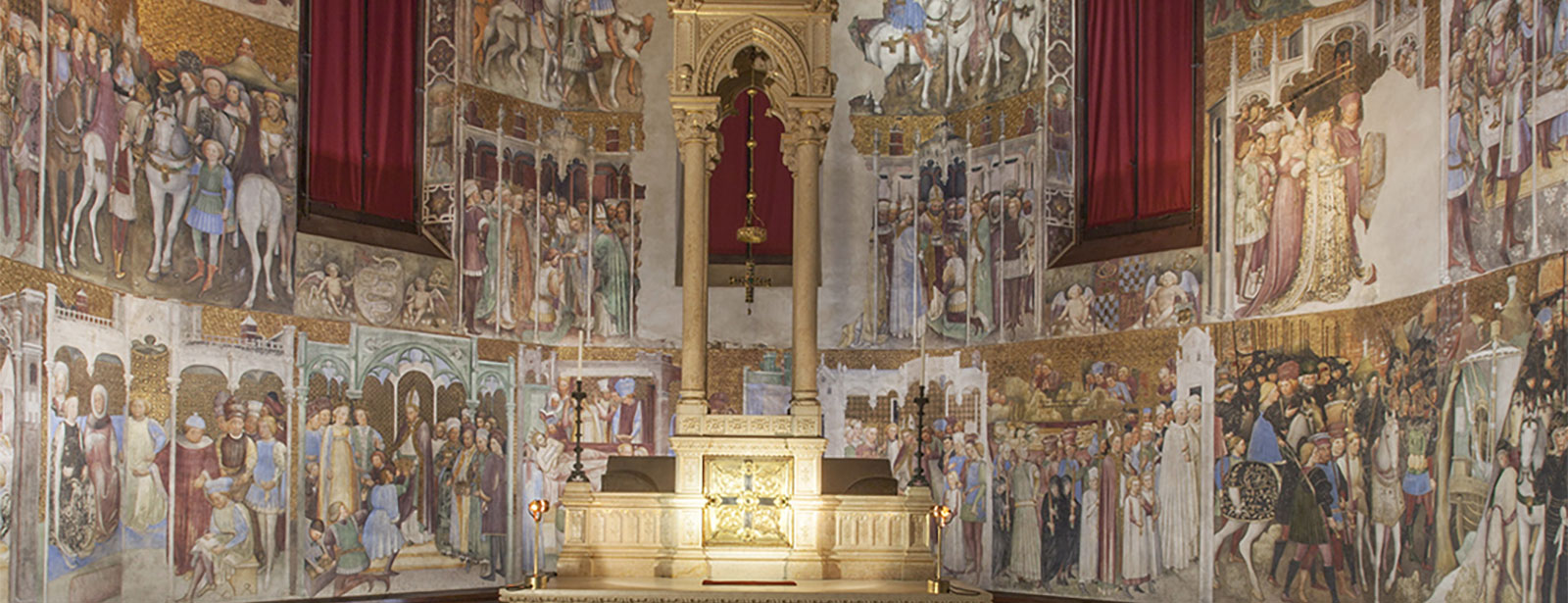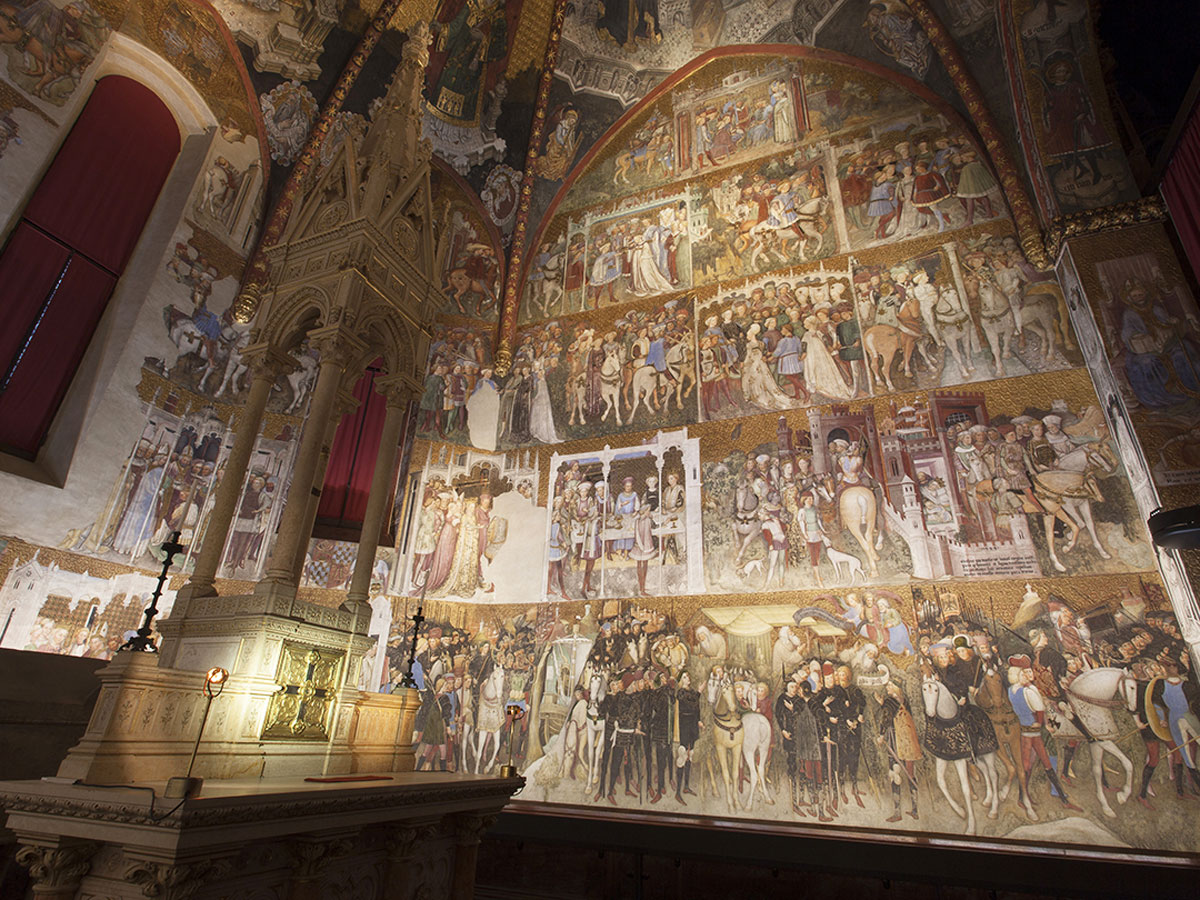The Chapel of Queen Theodolinda opens in the northern arm of the transept of the Cathedral of Monza. Of slender Gothic forms, it was erected in the years around 1400, during the last phase of the reconstruction works of the basilica started in 1300.
Its pictorial decoration, dating from the mid-fifteenth century and dedicated to the Stories of Theodolinda, distributed in 45 scenes, is presented as a heartfelt homage to the Lombard sovereign who founded the church and at the same time as a testimony of the delicate dynastic passage that was then profiling in the Duchy of Milan between the family of the Visconti and that of the Sforza, which refer to the heraldic symbols painted in the frames and the metaphorical allusions to the marriage between Bianca Maria Visconti and Francesco Sforza present in the images.
With the surviving works of Michelino da Besozzo, Pisanello and Bonifacio Bembo, to which it is intimately linked from a stylistic point of view, the fresco cycle of the chapel is considered one of the masterpieces of international Gothic painting in Italy, as well as the most important result of the activity of the Zavattari: a family of Milanese painters active in Lombardy for all the fifteenth century, which is presented to us by documents as a real dynasty of artists, composed of the progenitor Cristoforo, responsible between 1404 and 1409 for some works in the Duomo in Milan, by his son Franceschino, also active in the Duomo of Milan from 1417 to 1453, and by the three sons of the latter, Giovanni, Gregorio and Ambrogio, with whom Franceschino probably worked in Monza and, only with the last two, at the Certosa di Pavia.
The series is concluded by Franceschino II, son of Giovanni and brother of Vincenzo, Gian Giacomo and Guidone.







